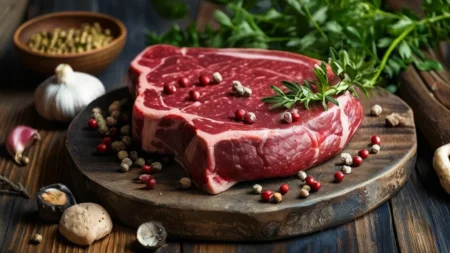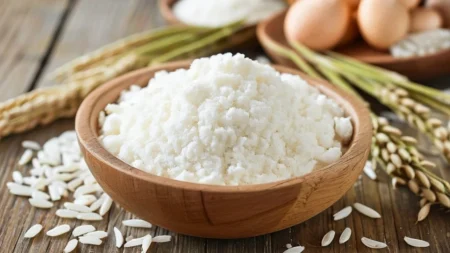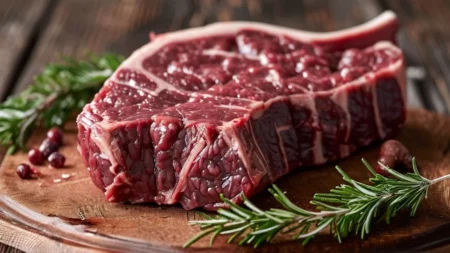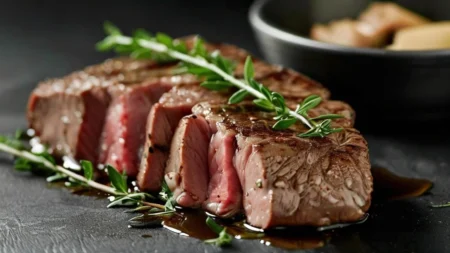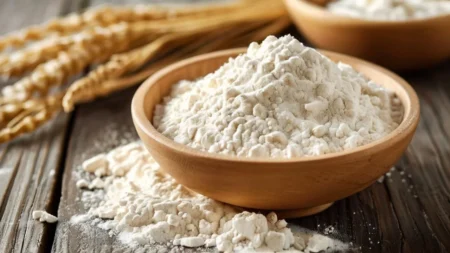Steak: A Delicious and Nutritious Protein Powerhouse
Key Takeaways
- Steak is a high-protein, nutrient-rich food that offers essential vitamins and minerals like iron, zinc, and B vitamins.
- Different cuts of steak vary in flavor, fat content, and tenderness, with popular cuts including ribeye, sirloin, and filet mignon.
- When consumed in moderation, steak can support muscle growth, provide long-lasting energy, and contribute to overall health.
- Cooking methods such as grilling, pan-searing, or broiling bring out the best flavors while preserving nutritional value.
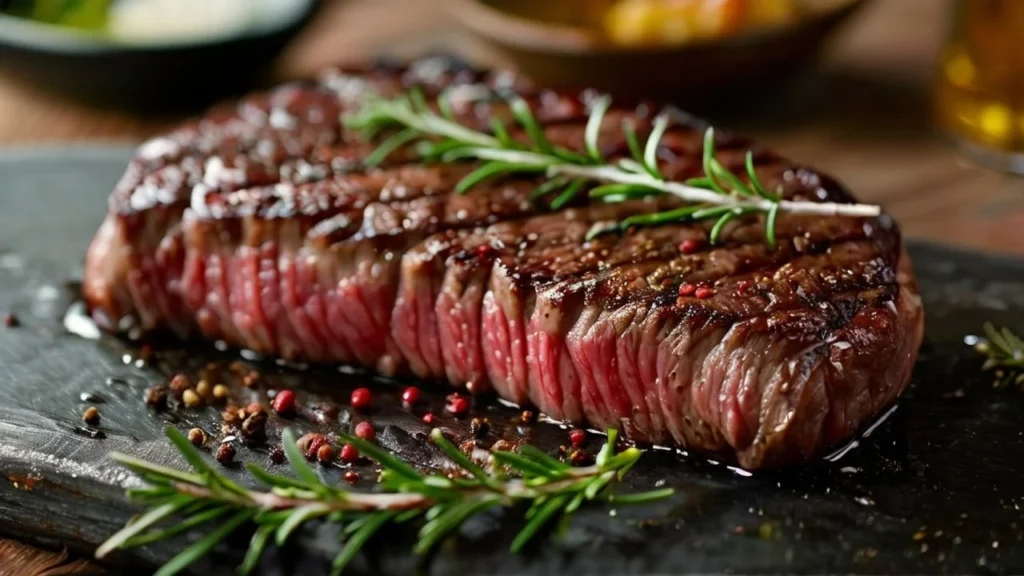
What is Steak?
Definition and Common Cuts of Steak
Steak is a term used to describe a high-quality cut of beef that is often prepared by grilling, broiling, or pan-searing. It is prized for its flavor, tenderness, and nutritional value. Different cuts of steak come from various parts of the cow, each offering distinct characteristics in terms of flavor and fat content.
Popular Cuts of Steak
- Ribeye: Known for its rich marbling and tender texture, ribeye is one of the most flavorful cuts.
- Sirloin: A leaner cut that is slightly less tender than ribeye but still offers a robust flavor.
- Filet Mignon: The most tender cut of beef, filet mignon is lean and mild in flavor, often considered a delicacy.
- T-Bone/Porterhouse: A cut that includes both the tenderloin and the strip steak, offering a mix of tenderness and flavor.
Table 1: Comparison of Nutritional Values of Popular Steak Cuts (per 100g)
| Cut | Calories | Protein (g) | Fat (g) | Iron (% DV) | Zinc (% DV) |
|---|---|---|---|---|---|
| Ribeye | 291 | 24 | 22 | 14 | 38 |
| Sirloin | 230 | 26 | 12 | 15 | 41 |
| Filet Mignon | 267 | 24 | 18 | 12 | 33 |
| T-Bone | 294 | 25 | 22 | 13 | 37 |
Nutritional Profile of Steak
High Protein Content
Steak is a fantastic source of high-quality protein, essential for muscle growth, repair, and overall body function. Protein also plays a key role in maintaining lean muscle mass, which is important for individuals of all ages, especially those with active lifestyles.
Rich in Iron
Iron is a vital mineral found in steak, particularly in its heme form, which is more easily absorbed by the body compared to plant-based iron. Iron supports the production of hemoglobin, a protein in red blood cells that transports oxygen throughout the body.
- Dietary Importance: Consuming iron-rich foods like steak can prevent iron deficiency anemia, a condition that leads to fatigue, weakness, and impaired cognitive function.
Source of B Vitamins
Steak is rich in various B vitamins, including B12, B6, and niacin, which support energy production, brain function, and the formation of red blood cells. Vitamin B12 is particularly important for neurological health and DNA synthesis.
Health Benefits of Steak
Muscle Growth and Recovery
Due to its high protein content, steak is a staple for individuals looking to build muscle mass and recover after intense physical activity. Protein-rich foods like steak provide essential amino acids that aid in the repair of muscle tissue.
- Scientific Insight: A study published in The American Journal of Clinical Nutrition highlights the role of red meat in promoting muscle protein synthesis, especially when combined with resistance training.
Long-Lasting Energy
Steak provides a balanced mix of protein, fat, and essential nutrients, offering a slow release of energy. This makes it an excellent choice for those needing sustained energy throughout the day.
Immune Support
Zinc, found abundantly in steak, is a key mineral for maintaining a healthy immune system. It helps the body fight off infections and speeds up wound healing.
Cooking Methods for Steak
Grilling
Grilling is one of the most popular methods for cooking steak, as it adds a smoky flavor and creates a nice char on the outside while maintaining juiciness inside. It is ideal for cuts like ribeye, sirloin, and T-bone.
Pan-Searing
Pan-searing allows for more control over the steak’s doneness and is a great method for cuts like filet mignon. This method produces a crispy crust on the steak’s surface while sealing in the juices.
Broiling
Broiling uses high heat from above to cook steak quickly. This method is excellent for thicker cuts that need to be cooked evenly, like porterhouse or T-bone.
List: Tips for Cooking the Perfect Steak
- Bring Steak to Room Temperature: Let your steak sit out for 30 minutes before cooking to ensure even cooking.
- Season Simply: Use salt and pepper to enhance the steak’s natural flavor.
- Use a Meat Thermometer: Cook to an internal temperature of 130°F for medium-rare, 145°F for medium.
- Rest the Steak: After cooking, let the steak rest for 5-10 minutes to allow the juices to redistribute.
Common Myths About Steak
Myth 1: Steak is Unhealthy
While steak can be high in saturated fat, choosing leaner cuts like sirloin and filet mignon, and eating it in moderation, can offer numerous health benefits without negatively impacting cholesterol levels or heart health.
Myth 2: Red Meat is Hard to Digest
While some people may experience difficulty digesting red meat, moderate servings of steak can be easily digested, especially when paired with fiber-rich foods like vegetables.
Myth 3: Well-Done Steak is the Safest Option
Cooking steak to a higher doneness (well-done) does not make it significantly safer than medium or medium-rare steaks, as long as proper food safety practices are followed.
Conclusion
Steak is a nutrient-dense and versatile source of high-quality protein, offering significant health benefits when enjoyed in moderation. Its rich content of iron, B vitamins, and zinc make it an excellent food for supporting muscle growth, energy levels, and immune function. Whether you prefer grilling, pan-searing, or broiling, choosing the right cut and cooking method ensures a delicious and satisfying meal.
FAQ
1. How often should I eat steak?
It’s generally recommended to eat red meat in moderation, around 1-2 times per week, depending on your dietary preferences and health goals.
2. What is the best way to cook steak for maximum flavor?
Grilling or pan-searing are popular methods that bring out the natural flavor of steak, especially when seasoned with just salt and pepper.
3. Is steak suitable for a weight-loss diet?
Yes, lean cuts of steak like sirloin and filet mignon can be part of a weight-loss diet due to their high protein content, which promotes satiety.
4. Can steak be part of a heart-healthy diet?
When choosing lean cuts and cooking methods that don’t add excessive fat, steak can be included in a heart-healthy diet in moderation.
5. What is the ideal doneness for steak?
Medium-rare (130°F) is the preferred doneness for many steak lovers, as it offers the best balance between flavor, tenderness, and juiciness.





